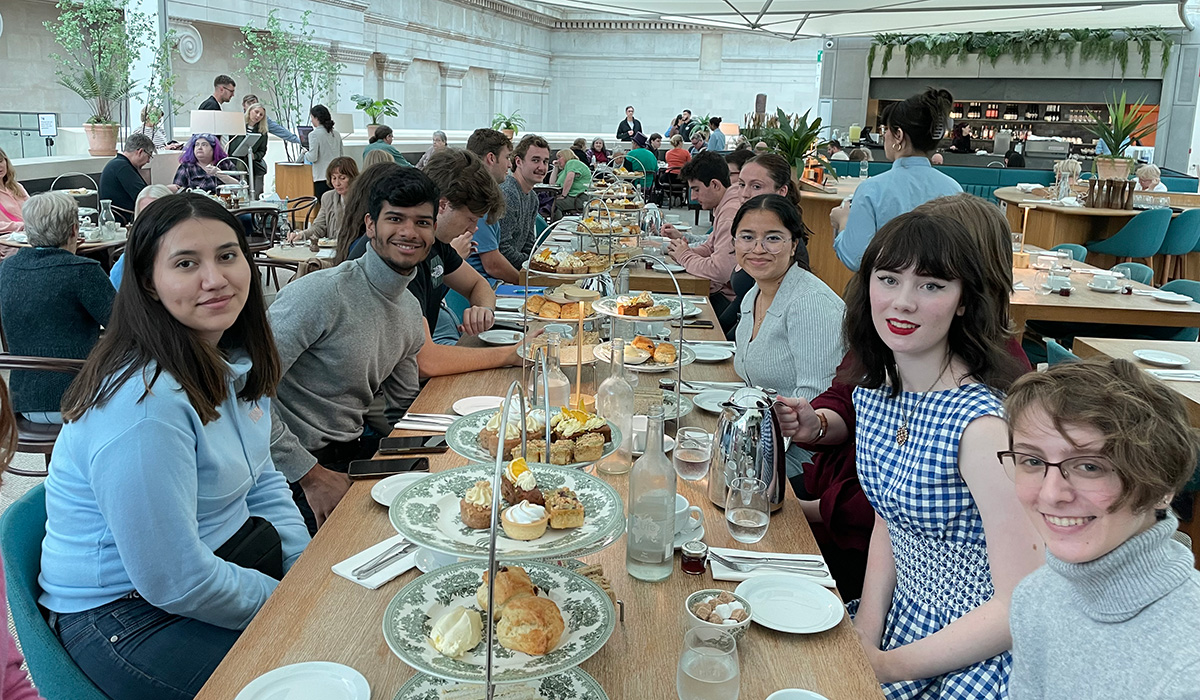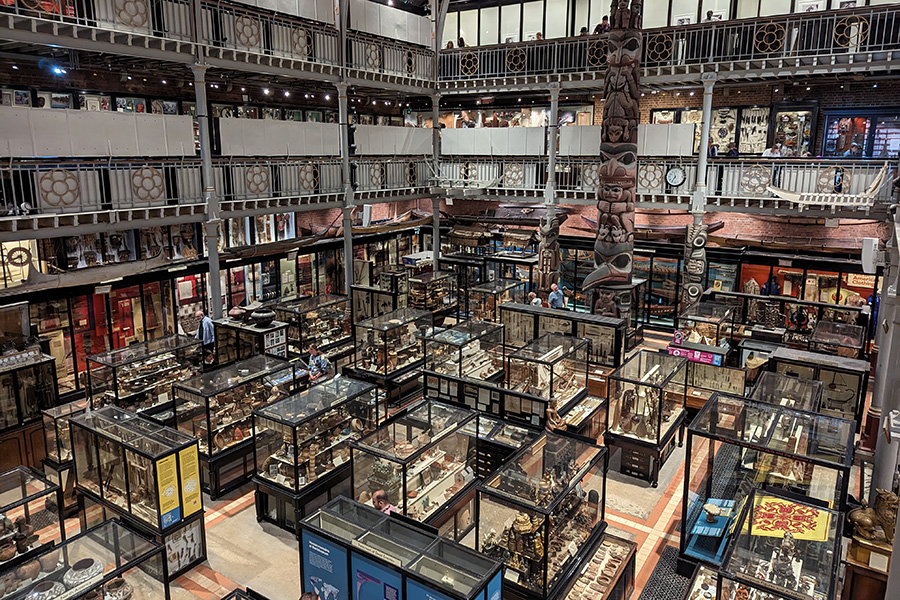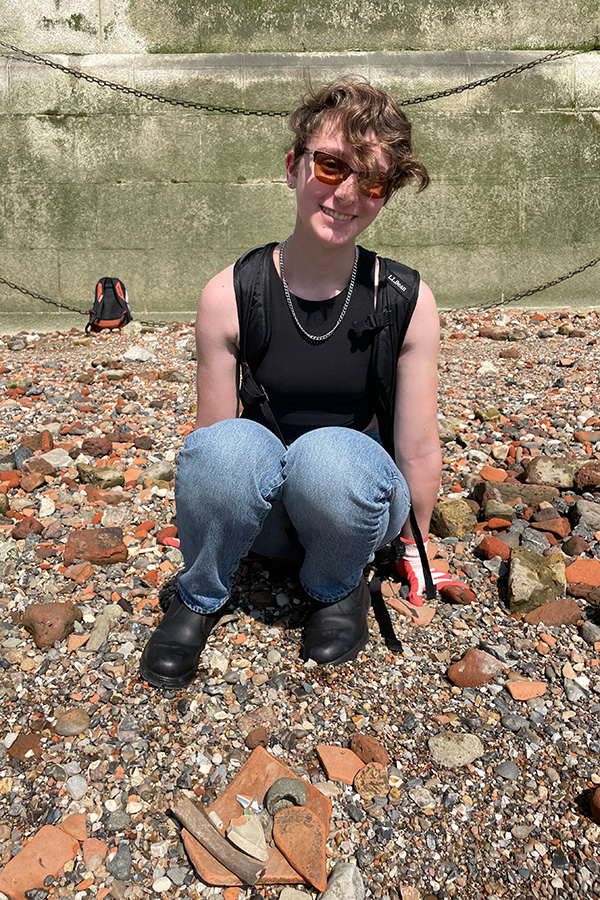
Traveling to England was an experience I’ll never forget, especially the three-week London seminar with Art and Art History Prof. Felicia Marlene Else, Curating London: Using Objects to Tell New Stories. I couldn’t thank the Center for Global Education enough for introducing me to Prof. Else and encouraging me along my study abroad journey.
Going into Prof. Else’s course, I didn’t have much experience with art history or museum studies, but I wasn’t alone. Of the 17 students in the Gettysburg in England program, only two came from the Art and Art History Department, and only one was an art history major. Our lack of experience in the world of art didn’t matter to neither Prof. Else nor the objective of the course.
Curating London asked us about our own biases reflected in the museums we look to for learning—the places where we go to field trips as elementary schoolers to learn more about the world around us. As children, we may not have realized that the very people who create these museums, as institutions of learning and collections of histories, are not free from bias and that the provenance of the objects displayed is often a story left untold or even deliberately concealed.
Prof. Else put us in a dialogue with each museum, asking how far they are going to do better than their predecessors to reunite objects with their ancestors and cultures through repatriation. Such a dialogue could be no further demonstrated than our group presentations in the British Museum, the poster child of colonization and the figurehead of repatriation, in which institutions like museums are asked to return objects to their original owners. There, we analyzed objects on the “Collecting and Empire Trail” and other contested objects, such as the Elgin Marbles, Rosetta Stone, and the Benin Bronzes.

Throughout the seminar, we noticed that the information gaps shared in the museums compared to their websites are wide and highlight our public perception of museums, history, and art. Websites will broadcast the contentious history of their collections as well as the people who made them, but the same cannot be said within the museum itself. The average museum visitor rarely looks at a museum website beyond buying tickets, and they will never see the breadth to which so many museums display “imperial artifacts” and cultural touchstones taken within colonization and enslavement. This information gap emphasizes how valuable our ability and motivation to search for the truth really is.
This information gap can be no better represented than with the case of Sir Hans Sloane, a naturalist, collector, and slave owner. He had collected more than 70,000 objects throughout his many journeys and bequeathed them to the British Museum and London Natural History Museum, but many of his achievements and collections came from the spoils of slavery. The display of Sloane in the British Museum’s Enlightenment Room testifies to his profit from slavery, showing a collection of artifacts that emphasized Sloane’s original work as a naturalist writing his first encyclopedias about American plants.
However, such credit is not given in the Natural History Museum in London, which also holds a large amount of Sloane’s collection. When it comes to displays of his contentious history, the museum provides little mention of his status as a Jamaican slave owner. The museum instead focuses on his encyclopedias naming thousands of plants and his “discovery” of chocolate milk without crediting the Jamaican population, both enslaved and free. That said, the Natural History Museum goes out of its way to point out Sloane’s sordid history, both on its website and in a YouTube video. In doing so, the museum demonstrates an appearance of sincerity and willingness to confront controversy without going through the effort to confront their past when people are actually looking.
I can’t emphasize enough the power of experiential learning in this course. Without the ability to visit so many of these museums, we would never have been able to engage with them properly or compare them to each other. We would have never learned of the widespread issues involving repatriation. Our different majors and perspectives allowed us to see how these issues trace back to our own areas of study, ranging from art history to the natural sciences.

Each different perspective is part of what makes the Gettysburg in England seminar course so unique. While we were all are going to Lancaster University later for our own respective studies, the seminar course brings us all together in a way that would never have happened otherwise. The nature of this seminar as an interdisciplinary course is a microcosm of liberal arts and sciences education, which challenges us with a breadth and depth of knowledge and new perspectives in various fields we may know absolutely nothing about.
Gettysburg offering this course goes to show how willing the College is to engage with these societal issues. Repatriation is by no means an easy topic to cover for anyone involved. Through the seminar, Prof. Else highlighted the fact that many of these “universal museums,” especially ones like the British Museum, have to answer to many entities: their government, historians, visitors, activists, original owners, and many more. Curating London provided us with a place to create a dialogue between us and the museums in a way that both respected their current position while still thinking critically about them.
However, Curating London would not have been the same without Prof. Else’s energy and the passion she poured into teaching us. She challenged us to think critically about the way museums and similar institutions of education present their stories and information. She brought an infectious amount of liveliness and joy into each classroom lecture and museum visit, something that was both necessary and extremely welcome with the number of places we had to cover in such a short time.
I learned so much about museums and museum curation than I ever thought I could have while taking this course. It was such a valuable experience and opportunity to learn so much and be part of such a great group of people. I couldn’t have gone to England and developed my critical thinking and communication skills without the Center for Global Education and Gettysburg’s encouragement to study abroad.
By Katie Lauriello ’25
Photos provided by Katie Lauriello ’25 and Prof. Felicia Else
Posted: 03/21/24